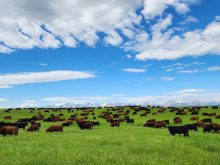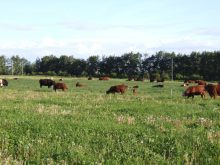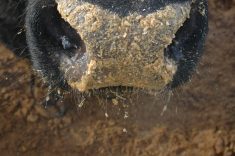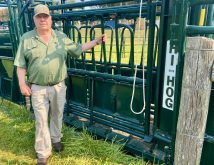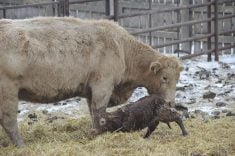Researchers to collect more data to test the argument that rotational grazing improves environmental and animal health
Champions of rotational grazing often say it improves soil health, compared to continuous grazing.
Their argument is compelling.
If a producer puts many cattle in a small paddock, for a short period of intensive grazing, it will concentrate manure and nutrients in that part of the field. Then, after a period of rest, the soil in the paddock will be healthier and possibly store more carbon.
However, more data is needed to support that argument, says a University of Guelph scientist who specializes in soil microbes and soil health.
Read Also

Trump’s tariffs take their toll on U.S. producers
U.S. farmers say Trump’s tariffs have been devastating for growers in that country.
“There’s a lot of anecdotal information about rotational grazing being better for soil carbon storage and better for soil health, but there isn’t a lot of numbers behind that,” said Kari Dunfield, the Canada Research Chair in Environmental Microbiology of Agro-Ecosystems and a U of G professor in environmental sciences.
Dunfield, though, is planning to gather more data on rotational grazing and soil health as part of a multi-disciplinary project at the U of G.
A team of scientists is conducting tests and taking samples at cattle farms in Ontario. At each site, the researchers will compare the performance of a rotational grazed farm to a paired farm that uses conventional grazing.
The researchers will take water samples from nearby creeks and fecal samples from the cattle and track antibiotic resistance in the herds.
This big picture approach will evaluate the potential benefits of rotational grazing for the environment, human health and herd health.
“No one has looked holistically at the impacts of cattle grazing practices on the entire ecosystem before,” said Heather Murphy, a professor in the Department of Pathobiology at the U of G.
The study began two years ago.
Researchers have been collecting samples from two beef farms in Ontario. The study has now been expanded to 10 farms, thanks to funding from Beef Farmers of Ontario, the U of Guelph said in a November news release.
Water samples taken from groundwater and surface water suggest that conventional grazing may cause more water pollution. That’s because cattle in conventional grazing gather and remain on certain parts of the pasture.
“Following rainfall, the fecal matter may be washed out more readily into the surrounding waterways, compared to rotationally grazed farms where it is spread more evenly,” Murphy said. “This leads us to believe that on rotationally grazed farms, the fecal matter has a better chance of drying out, allowing pathogens that could contaminate water sources to die off more quickly.”
Scientists in the team also have some preliminary conclusions about rotational grazing and herd health.
Fecal samples suggest there is less anti-microbial resistance in those herds, possibly because cattle in rotational grazing are in better health.
“Healthier cows require less medication, which translates into less antimicrobial-resistant bacteria being created and shed through their stool,” said Nicole Ricker of the Ontario Veterinary College.
Dunfield is encouraged that scientists from different disciplines — soil, animal health, human health and the environment — will work together on this study.
It’s difficult to see changes in soil health during a three-year research project, but scientists may find other benefits of rotational grazing.
“I think soil is really hard to see differences, especially with carbon,” Dunfield said. “(But) maybe we are decreasing pathogens or improving water quality, or affecting animal health and human health.”
The research project will continue until 2025.





